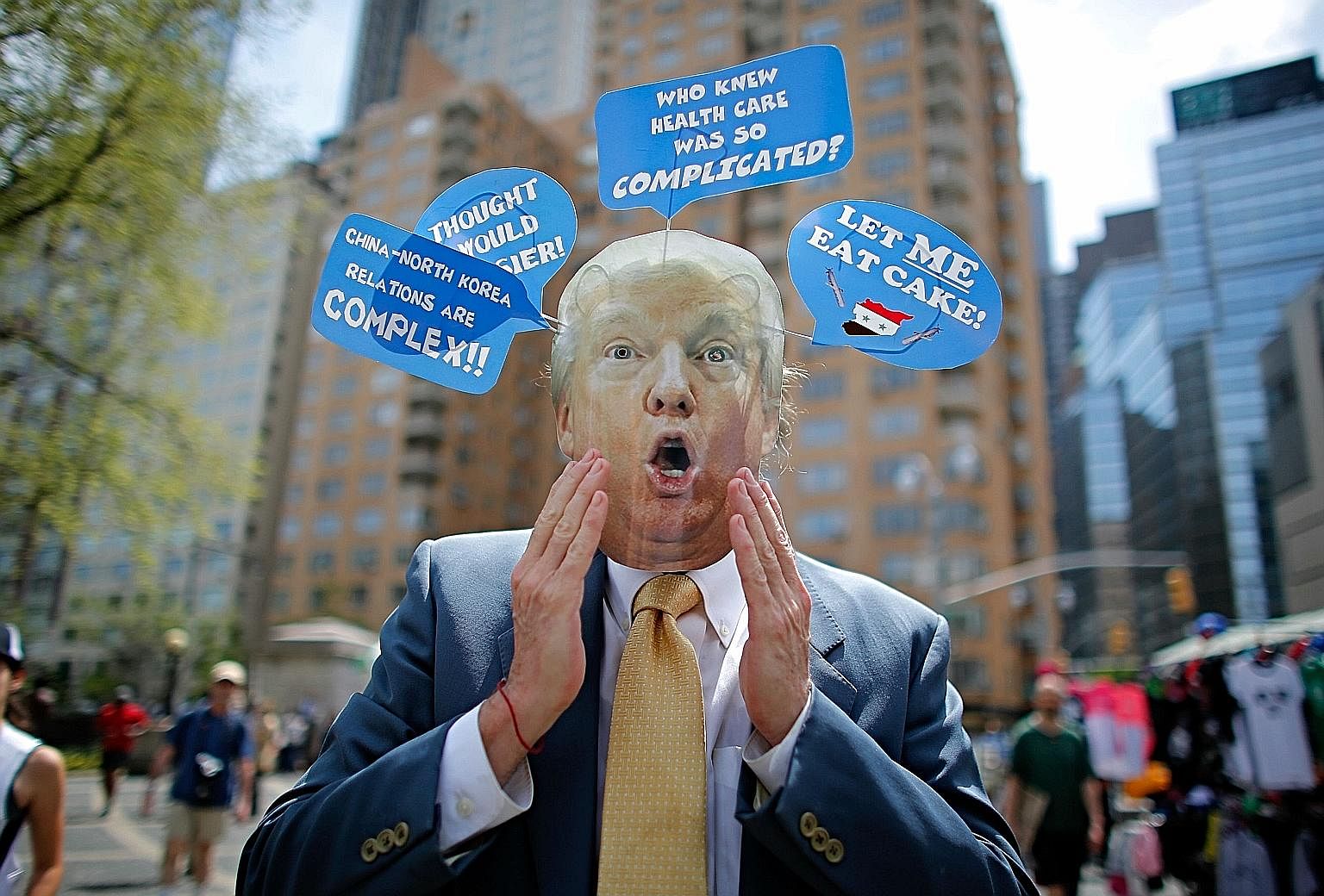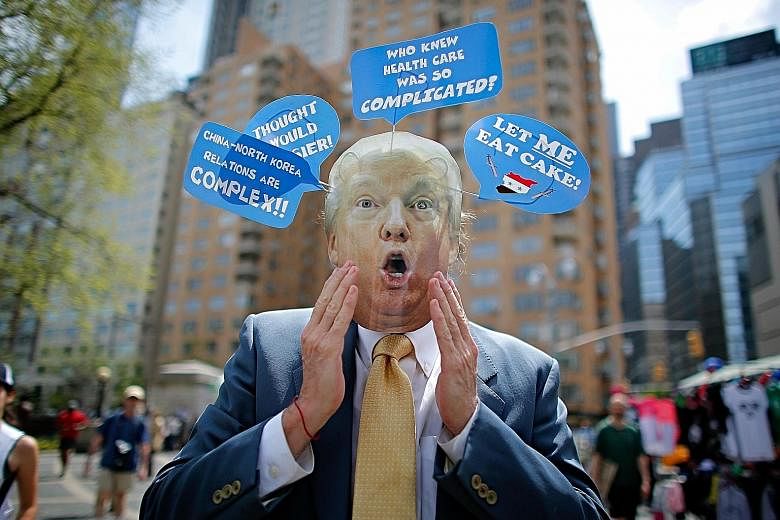New US presidents like to hit the ground running. In their first 100 days, they seek to use the political momentum from their election win to get things done. Meanwhile, the first few months also offer clues about the priorities and style of a new administration.
So with Mr Donald Trump passing the 100-day mark on April 29, what should investors make of the newcomer to the White House?
For a global audience, the surprises have been both positive and negative.
GOOD NEWS
Let's start with the positive. Mr Trump's trade policies have been less aggressively protectionist than his campaign rhetoric suggested. Of course, the administration's first days were discouraging for proponents of free trade. After less than 100 hours in office, Mr Trump signed an executive order withdrawing the United States from the Trans-Pacific Partnership - a giant trade deal embracing countries that account for 40 per cent of global GDP and one that had taken a decade to negotiate.
But investors can be encouraged that Mr Trump has not followed through on his campaign pledge to declare China a "currency manipulator", which was part of his "100-day action plan to Make American Great Again". And, while the latest US Treasury report was more strongly worded than before about unfair currency practices, it is a relief that no other countries were added to the US monitoring list.

Mr Trump has also avoided hasty action in rolling back the North American Free Trade Agreement, the pact with Canada and Mexico he once described as "the worst trade deal ever". His sole move in this regard has been to request a study on US trade agreements from the Commerce Department and US trade representative. One of the clearest signs that protectionist fears have waned is the recovery of the Mexican peso, which fell sharply on US election night (the US dollar rose 20 per cent versus the peso between the Nov 8 vote and mid-January; it is now close to its pre-election rate of around 19 pesos to US$1 (S$1.4). Meanwhile, Asian currencies have also rebounded strongly, with the Taiwan dollar and South Korean won, in particular, rising nearly 6 to 7 per cent in the year to date.
Although the immediate risk of trade wars seems to have declined, we will remain alert for signs that Mr Trump is returning to a more protectionist stance, which would harm the US dollar. America's current-account deficit requires the country to attract US$2.9 billion (S$4 billion) a day in foreign funds, which would become harder if global trading relations deteriorate. And the greenback is already significantly overvalued, according to UBS CIO estimates, especially against the euro. In addition, a trade war with China and Mexico would jeopardise the US economic recovery overall. The Peterson Institute estimates it could cost up to 4.8 million US jobs, or 4 per cent of the total labour force, by 2019.
Our view is that China would retaliate proportionately against hostile US trade moves, likely disrupting global supply chains. Such a conflict could also hurt China by causing some of its manufacturing activity to move to rival emerging nations. That would reduce the size of its trade surplus and put pressure on the yuan. At present, we expect the dollar-yuan rate to drift moderately higher to 7.1 in six months. Other top trading economies that would also feel the effectsinclude Taiwan, South Korea and Singapore. Outside of this tail risk, the US-Singdollar rate should hover at around 1.40 over the next six months on the back of a zero-appreciation monetary policy stance adopted by the Monetary Authority of Singapore.
'THIS JOB IS HARDER THAN I THOUGHT'
But while trade policy has been less disruptive than feared, Mr Trump has also failed to deliver the economic stimulus promised during his campaign. His proposed pro-growth policies fell into three categories: tax cuts, reduced business regulation and infrastructure spending. The most visible progress has been made in trimming regulation.
The White House ordered government agencies to propose eliminating two regulations for each new one they issue, while a series of executive orders has aimed at simplifying and limiting federal regulations. While such measures are unlikely to cause a swift growth upswing, less intense regulations are potentially a boon to the banking and energy sectors - our favoured exposures in the US, alongside technology and healthcare.
Meanwhile, the administration has only recently turned its attention to tax cuts. It proposed reducing the corporate income tax rate from 35 per cent to 15 per cent. As with healthcare reforms, a comprehensive tax package will not be easy to shepherd through Congress. Haggling there is likely to prevent the corporate rate from falling to 15 per cent. We consider 25 per cent to be more realistic. Such measures, in our view, will boost US earnings only modestly. They will add US$2.50 to the US$132 of S&P 500 earnings per share forecast for this year, and US$5 to the expected earnings per share of US$145 for next year.
Finally, no real progress has been made yet in advancing the US$1 trillion, 10-year infrastructure package that Mr Trump touted. The framework for it has not been drawn up as lawmakers have focused instead on the higher profile debates centred on taxes and healthcare.
The upshot is that the net effect of Mr Trump's first 100 days has been modest. It has left investors free to focus on economic and earnings fundamentals. US and global equities, for which we continue to maintain a tactical preference, have been carried higher by an unusually synchronised acceleration in global growth, rising corporate profits and accommodative liquidity conditions. In Asia, corporate fundamentals continue to improve, as evidenced by recent reports of better asset quality and stronger credit growth among major banks not just in Singapore, but also in Hong Kong, China and several Asean markets.
Of course, investors should not overstate the importance of these 100 days. The new US President still has 93 per cent of his first term remaining - plenty of time to make a much greater impact on financial markets and the global economy.
• The writer is the Asia-Pacific regional head at the chief investment office of UBS Wealth Management.


